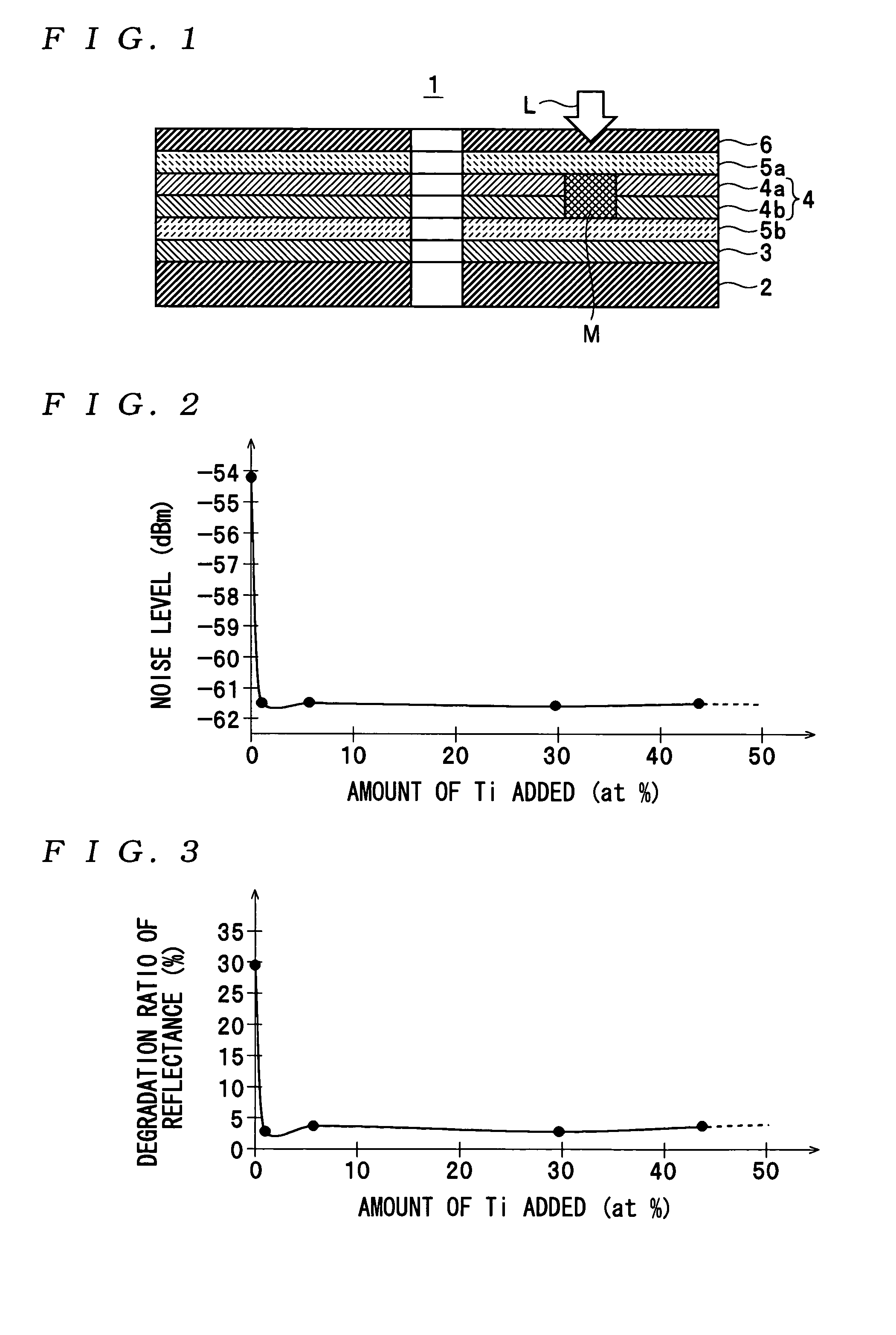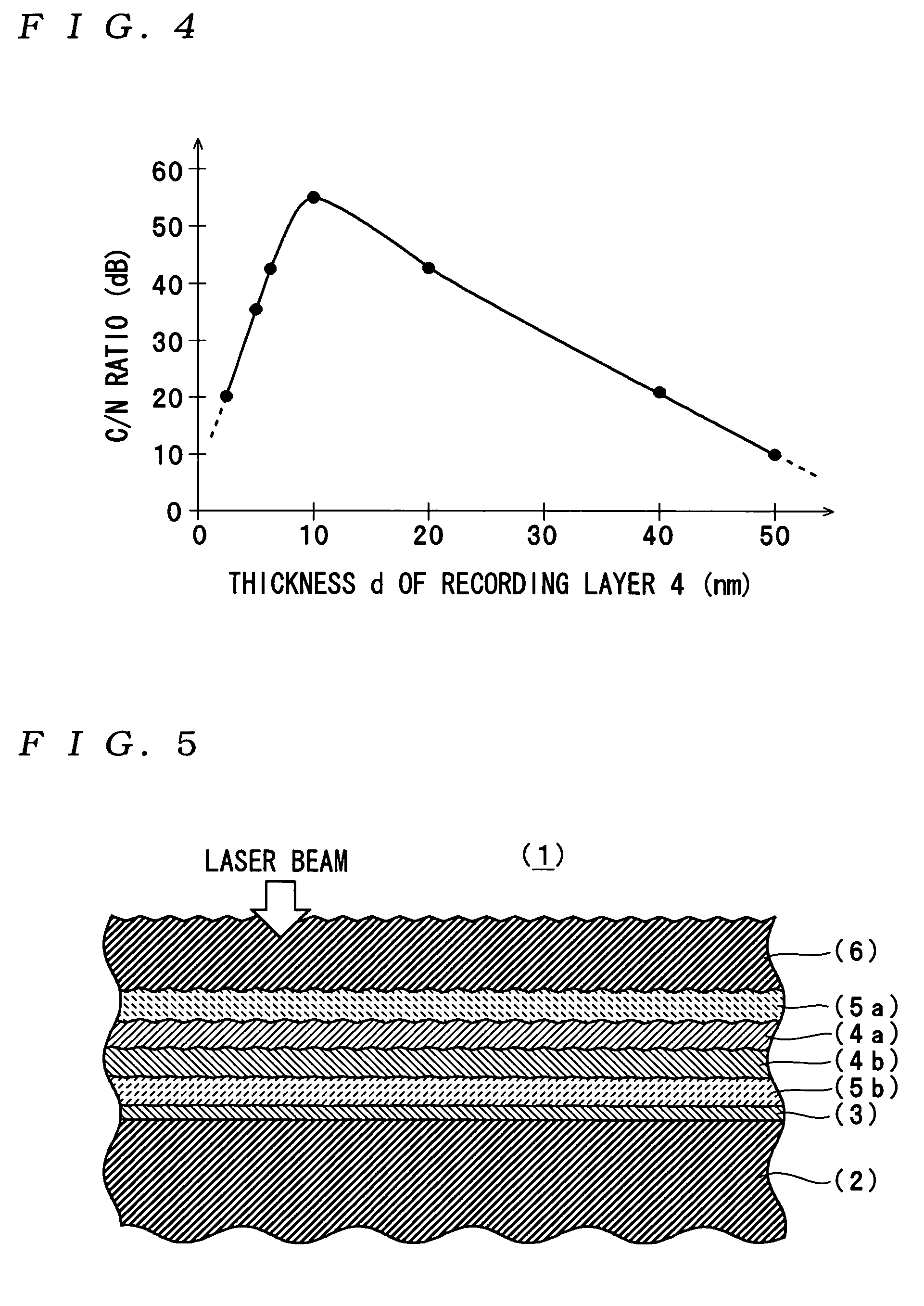Optical information recording medium
a technology of optical information and recording medium, which is applied in mechanical recording, instruments, and thermography, etc., can solve the problems of difficult to accurately read the data recorded on the optical information recording medium, difficult to obtain the desired tilt margin, and a large thickness of the substrate, so as to reduce the noise level and improve the c/n ratio
- Summary
- Abstract
- Description
- Claims
- Application Information
AI Technical Summary
Benefits of technology
Problems solved by technology
Method used
Image
Examples
Embodiment Construction
[0025]The invention will now be described in detail with reference to the accompanying drawings showing a preferred embodiment thereof.
[0026]First, a description will be given of the construction of an optical information recording medium 1 according to the present invention.
[0027]The optical information recording medium 1 is a single-sided single-layered optical disk of a write-once type, having an outer diameter of approximately 120 mm and a thickness of 1.2 mm, and configured to be capable of recording and reproducing record data, using a blue-violet laser beam (hereinafter referred to as the “laser beam”) L having a wavelength (λ) not less than 380 nm and not more than 450 nm (e.g. 405 nm), emitted from an objective lens having a numerical aperture (NA) of not less than 0.7 (e.g. approximately 0.85). More specifically, as shown in FIG. 1, the optical information recording medium 1 is comprised of a reflective layer 3, a second dielectric layer 5b, a recording layer 4, a first di...
PUM
| Property | Measurement | Unit |
|---|---|---|
| thickness | aaaaa | aaaaa |
| thickness | aaaaa | aaaaa |
| thickness | aaaaa | aaaaa |
Abstract
Description
Claims
Application Information
 Login to View More
Login to View More - R&D
- Intellectual Property
- Life Sciences
- Materials
- Tech Scout
- Unparalleled Data Quality
- Higher Quality Content
- 60% Fewer Hallucinations
Browse by: Latest US Patents, China's latest patents, Technical Efficacy Thesaurus, Application Domain, Technology Topic, Popular Technical Reports.
© 2025 PatSnap. All rights reserved.Legal|Privacy policy|Modern Slavery Act Transparency Statement|Sitemap|About US| Contact US: help@patsnap.com



